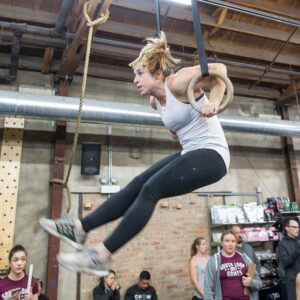When figuring out pacing for a workout, there’s a few common ways that athletes calculate what they can expect to accomplish.
The first (and most common) is to pace off of someone else who you know is typically around the same fitness level – maybe plus or minus a few reps or rounds.
The second is to do a round at a moderate effort then adjust the pace up or down from there.
While these are both reasonable strategies and can give an idea of what is realistic, it’s also important to be able to calculate an expected pace from “first principles” so-to-speak.
Doing this is a skill just like any other, and requires knowing a few tricks: how long do certain movements take, how long do transitions typically take, how often can you expect to lift a heavy barbell, and how much can you expect to slow down during a workout?
Check out the full conversation with Jon and Todd to learn:
- How long common movements take – like wall balls, dumbbell snatches, and burpees
- How to think about pacing heavy barbells
- How to factor in rest and fatigue when calculating your paces for workouts
Listen below – or on the podcast player of your choice.
Listen Here
- iTunes
- Overcast
- Google Podcasts
- mp3
- Or stream here:
- If you’re enjoying the show, why not a leave a review? It makes a difference in terms of other people finding the show.
Show Notes:
- [00:15] The 2 most common strategies that people use when approaching workouts: pacing off of their own first round and pacing off of someone who tends to be at a similar capacity. How can we use basic rep math to get an outside perspective on how long our rounds should take?
- [13:10] How do we account for fatigue accumulating as we work? And how do we deal with barbell-based movements like heavy squat cleans when estimating time?
- [25:09] Cyclical pieces like rowing and biking give us a monitor – but how do we know what paces we should attempt to hold?






